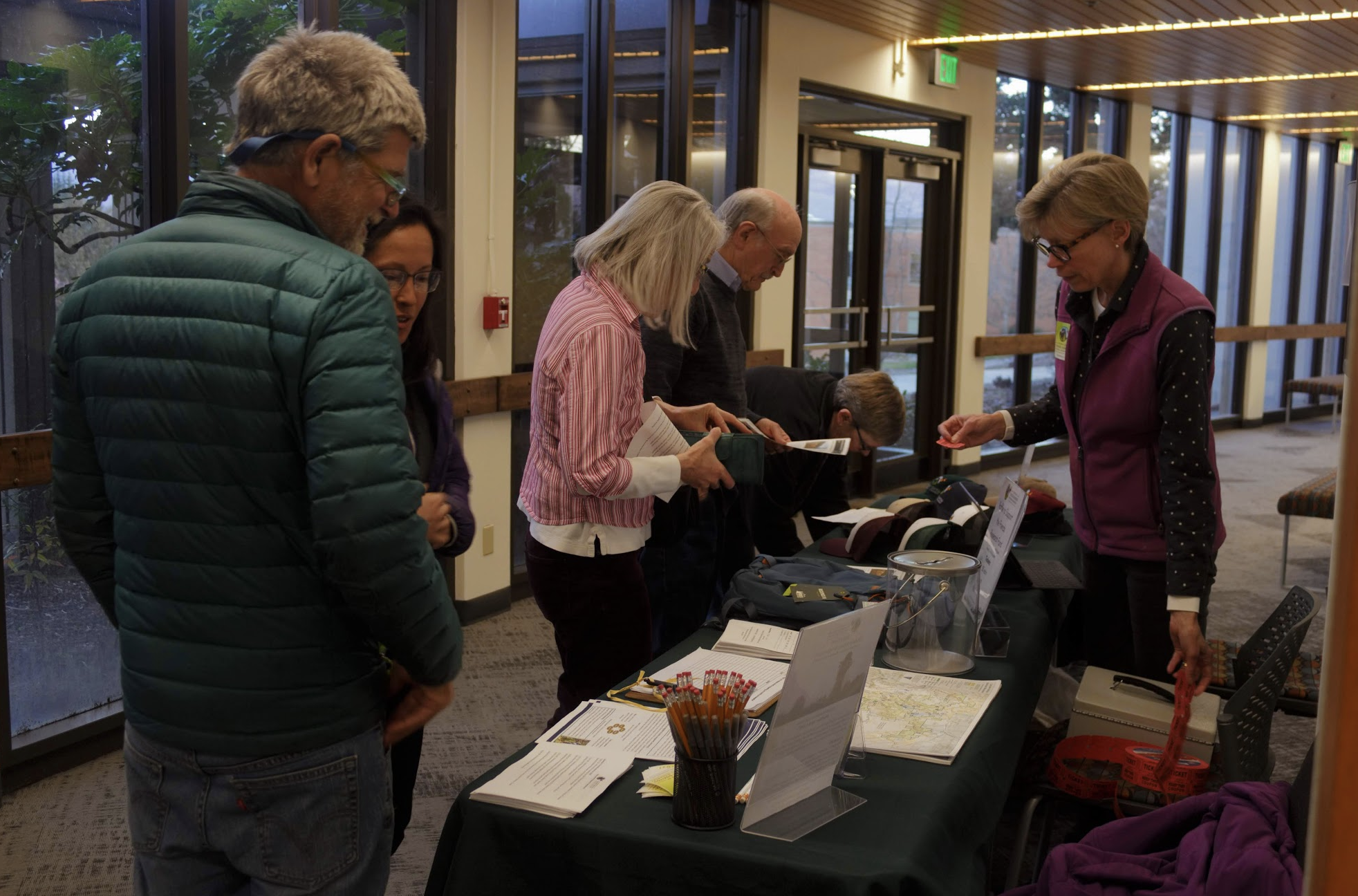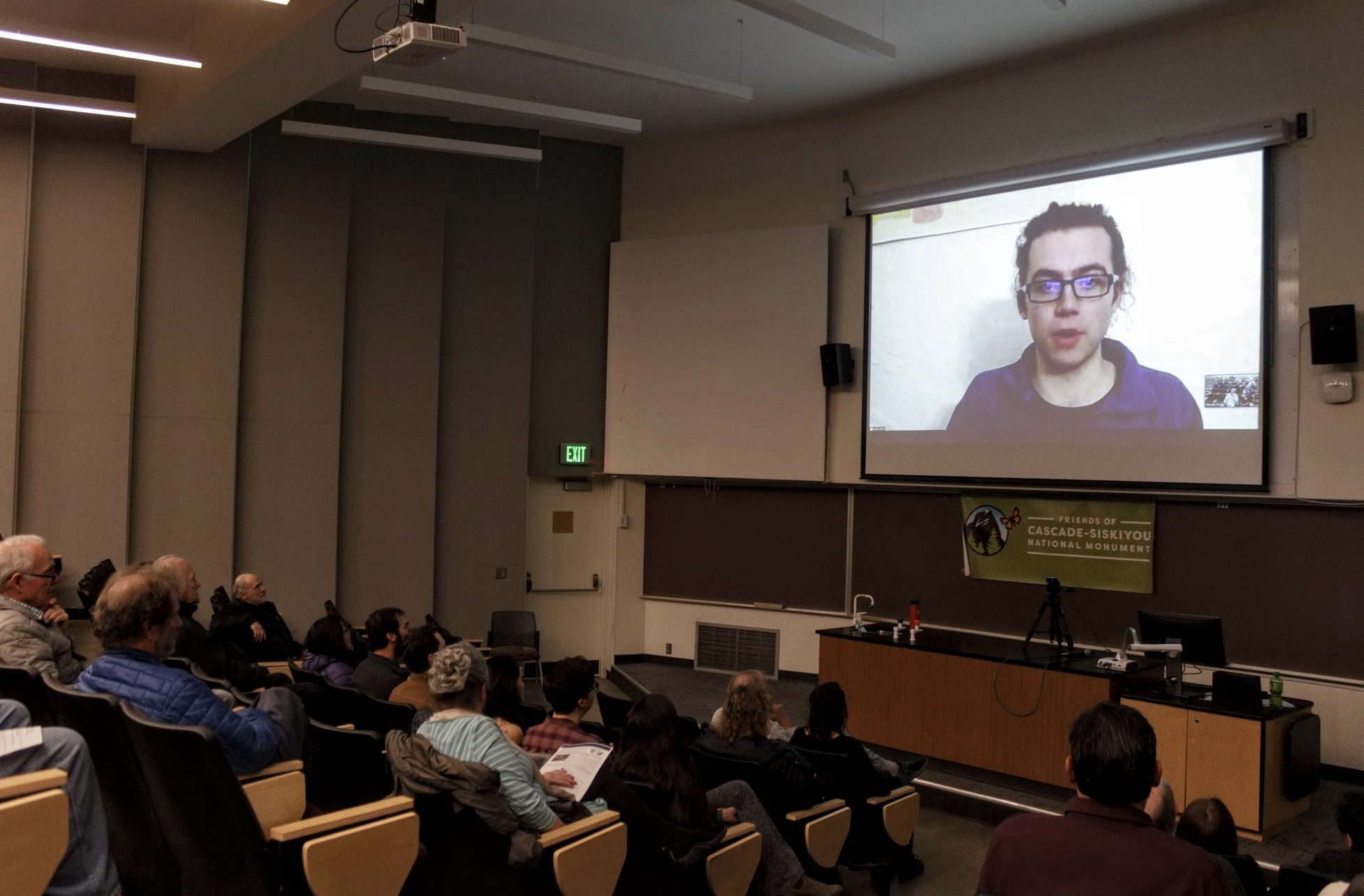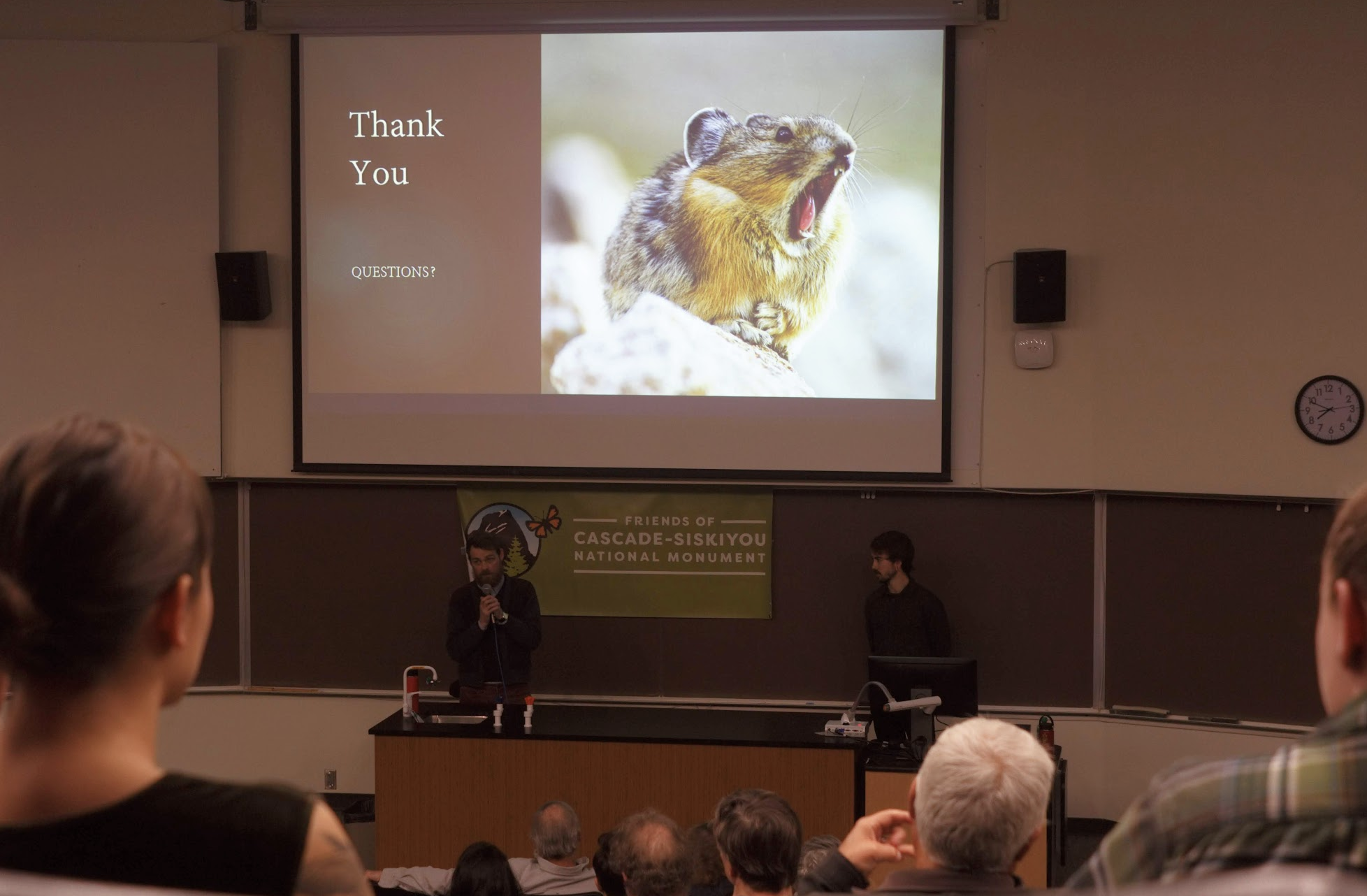By Nicole Ferer, Friends of CSNM Student Board Member.
What do American pika, the Oregon Vesper sparrow and the Western Cascades have in common? They all were student research projects conducted in our wonderful Monument, supported by the Friends of the Cascade-Siskiyou National Monument. For the past three years, the Friends have hosted the Monument Research Symposium, highlighting research projects ranging from dragonflies to great grey owls. The event provides a platform for scientific research communication where community members, students and Monument-enthusiasts alike can learn about current research being conducted in the Monument.
This year at the Monument Research Symposium we were fortunate enough to have four knowledgeable and enthusiastic student researchers, all recipients of the Friends Research Fund, whose passion for their field research, specific projects, and the Monument as a whole was infectious for the entire audience.
Emily Lind SOU, MS Environmental Education
Morphology and vocalizations of the Oregon Vesper sparrow subspecies in and around the Cascade-Siskiyou National Monument. Dr. Stewart Janes, SOU Professor of Biology / Director of Environmental Education, served as faculty advisor.
The Oregon Vesper sparrow subspecies is currently being petitioned for listing under the Endangered Species Act. Emily and her research team collected feather samples for future genetic analysis, and morphological metrics (form and structure) for all birds captured. They also recorded vocalizations (calls and songs) from 25 individuals from the Rogue Basin, Willamette Valley, and Great Basin populations combined. All of this data will be helpful in determining subspecies distinctions between the Willamette Valley, Rogue Basin, and Great Basin Vesper Sparrow populations. The preliminary analysis of morphology shows that there are significant differences between the Willamette Valley and Rogue Basin Vesper sparrow populations.
Dylan Carlini University of Oregon, BS Geology
Geochemical analyzation and geologic mapping of the Western and High Cascades. Dr. Jad D’Allura, SOU Professor Emeritus, served as faculty advisor.
The interface between the Western and High Cascades is a particularly geologically interesting location and warrants much greater study. The goal of this research project was to contribute to a comprehensive geologic map of the CSNM in order to provide a better understanding of the history and genesis of the Monument. Dylan’s field research consisted of mapping and geochemically analyzing (determining the chemical compound) volcanic rock units of the Western and High Cascades using LiDAR data (surveying method that measures distance using lasers), topographic maps, and petrographic analysis. Dylan and his team were able to extend the range of the Western Cascade exposures by over half a kilometer into what was previously mapped as High Cascade materials.
Alec Bayarsky and Neil Clayton SOU, BS Environmental Science and Policy
Distribution of American Pika (Ochotona princeps) within the Cascade-Siskiyou National Monument. Dr. Jamie Trammell, SOU Professor of Environmental Science, served as faculty advisor.
While a population of American pika was recently discovered in the CSNM, there is a general lack of information about their abundance and spatial distribution. The purpose of this study was to describe the distribution of American pika within the Monument, specifically through: (1) location analysis using Geographic Information Systems (GIS) mapping to determine potential pika habitat, (2) physical survey of known and potential habitat, including documenting the presence of hay piles, active latrines, and identification of individuals, and (3) comparison of vegetation availability with hay pile composition. Evidence of this population would also alert the wider scientific community to its existence and provide insight into pika behavior in the face of adversity such as genetic isolation and climate change. Not only did the results show that the CSNM does in fact contain habitat that is suitable for use by the American pika, Neil and Alec saw and heard the distinct “MEEEEEP” of our furry friend during their time in the field!
In addition to our spectacular student researchers, lichenologist and mycologist John Villella presented the keynote address about lichen communities of white oak in the Klamath-Siskiyou region. White oak plant communities are one of the most threatened habitat types in the Pacific Northwest, and often host diverse and characteristic lichen communities. John and his research team investigated the oak lichens of the Cascade-Siskiyou National Monument and observed floristic patterns (where plants grow) that indicate a mix of species from six geographic-floristic groups. He shared how his research findings influence our current knowledge of white oak lichen communities and the importance of the Cascade-Siskiyou National Monument as a dispersal corridor and refuge for lichens within the Klamath-Siskiyou region.
Shannon Brown, Executive Director of Friends of CSNM, wrapped up the evening by sharing new discoveries made by biologist/micologist Scot Loring (who serves as a board member for Friends of CSNM) in the Monument. Scot’s new mushroom find is of particular note: it’s in the genus Cortinarius and is the first known endemic mushroom to the Monument. Scot also discovered a species of lichen, Calicium pinastri, in the Monument previously unknown to exist in western North America. This discovery represents a major range extension and begs the question: what else is there to discover in the Monument?
Stay tuned to find out about this year’s student researchers who will soon be heading out into the field!






